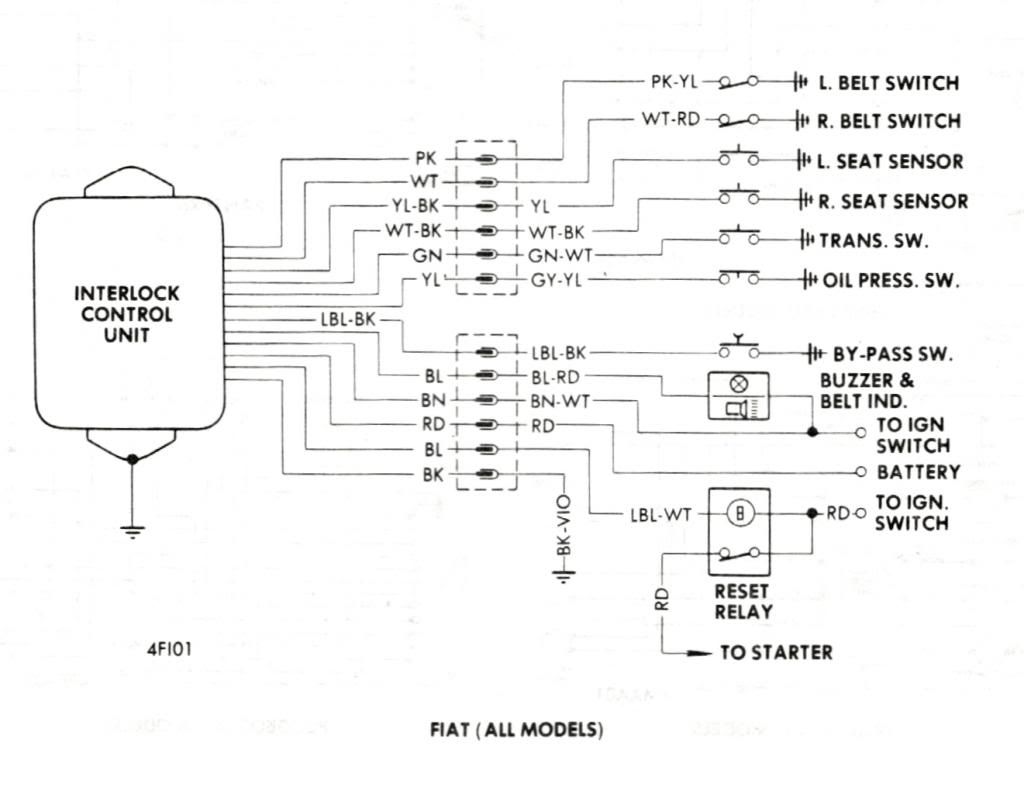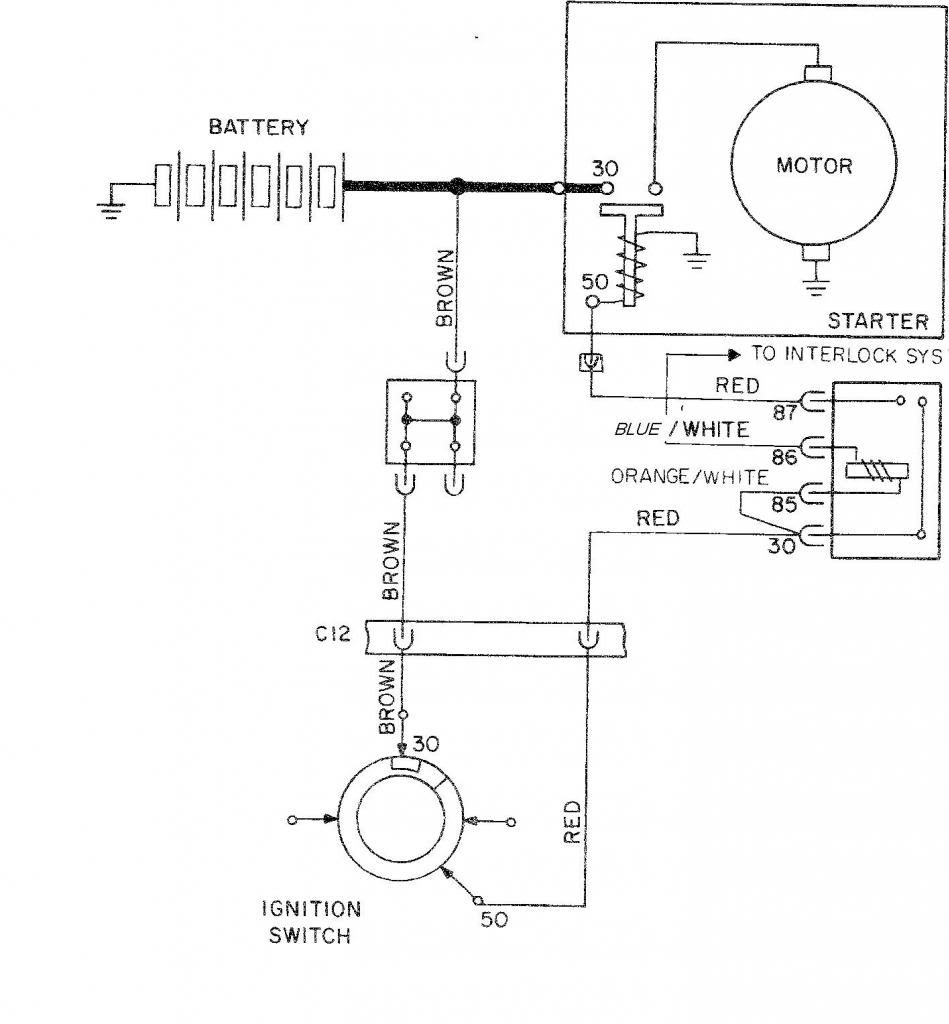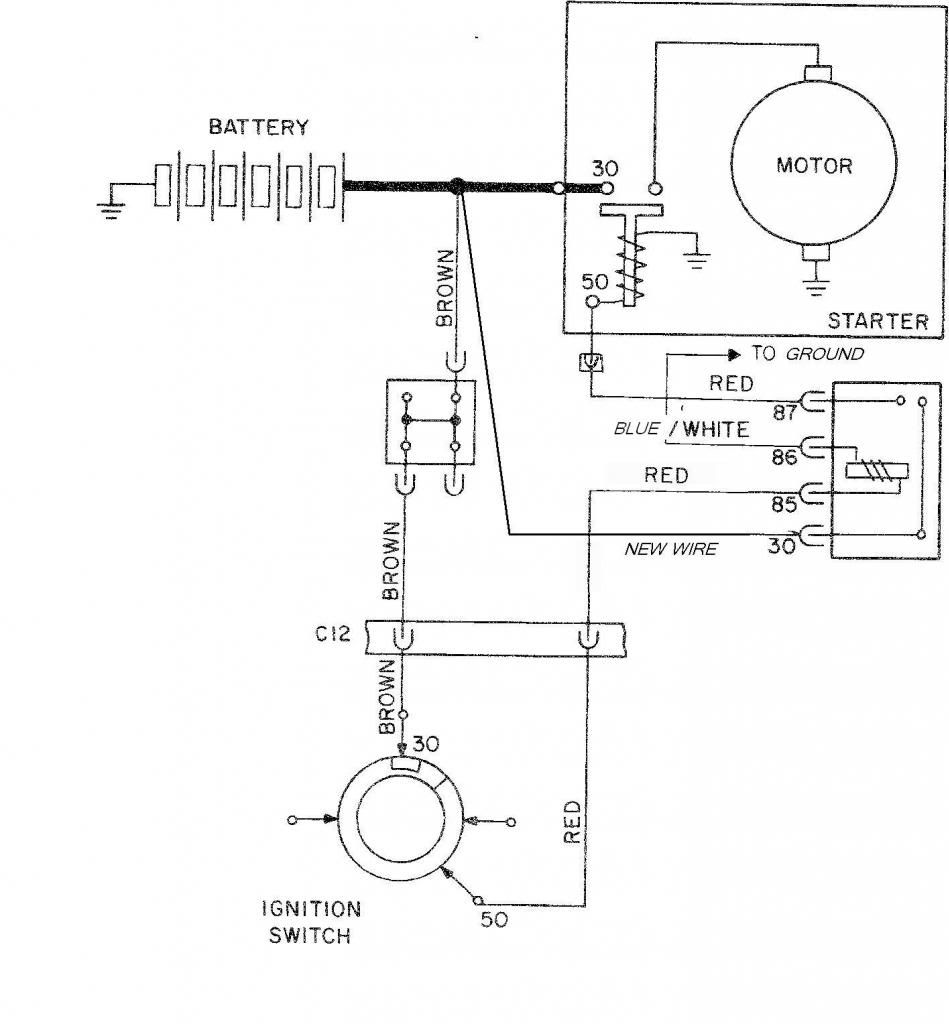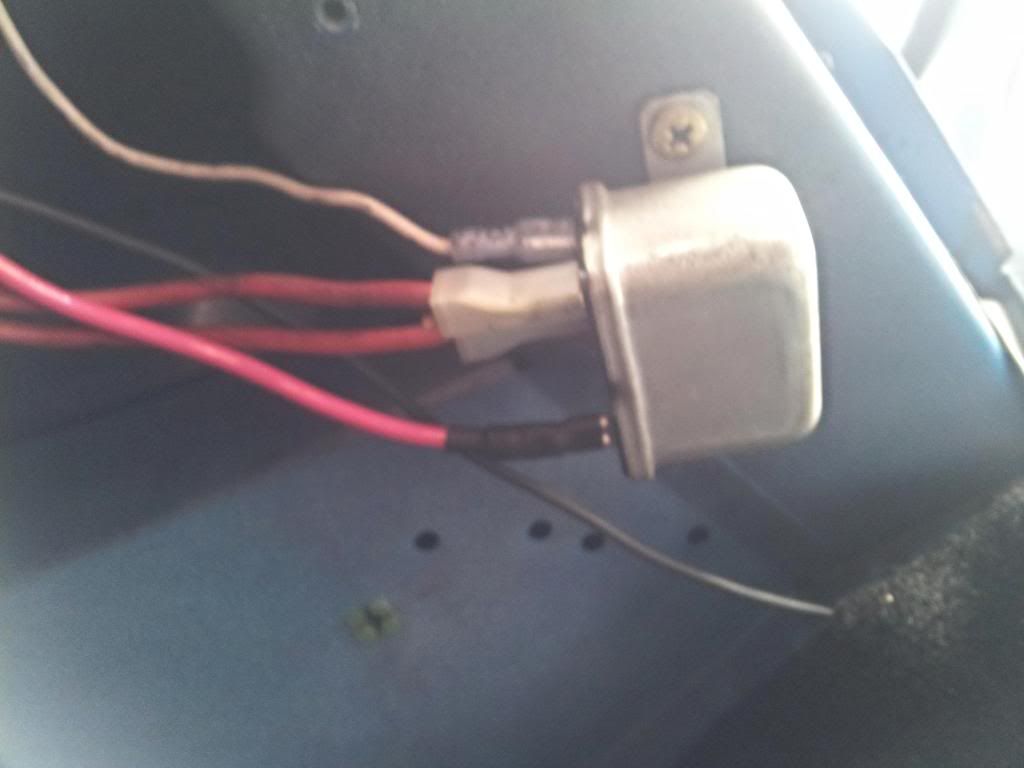Have both a question but also trying to document for future searches so links and pictures come up in one place.
The seat belt interlock, unique to 1974 and very early 1975 cars, have two (?) relays and controller tucked under the passenger side dash as pictured here.

Uploaded with ImageShack.us
Here is a picture of the controller.

Uploaded with ImageShack.us
Here is a picture of the one of the relays.

Uploaded with ImageShack.us
There is supposed to be a second one, correct?
Bypass instructions from DaytonTom:
[FONT=Trebuchet MS, Verdana, Tahoma, Arial]"To by-pass the seat belt system disconnect the large white and the large red connectors between the two relays. On the white connector attached to the starter relay, this will have the FEMALE connections in it, use a short piece of wire, crimp a male spade on each end, and use that to jumper from the blue wire with white stripe over to the light blue wire with red stripe. (these will be 2 corners on the same side of the white connector.)[/FONT]"
The seat belt interlock, unique to 1974 and very early 1975 cars, have two (?) relays and controller tucked under the passenger side dash as pictured here.

Uploaded with ImageShack.us
Here is a picture of the controller.

Uploaded with ImageShack.us
Here is a picture of the one of the relays.

Uploaded with ImageShack.us
There is supposed to be a second one, correct?
Bypass instructions from DaytonTom:
[FONT=Trebuchet MS, Verdana, Tahoma, Arial]"To by-pass the seat belt system disconnect the large white and the large red connectors between the two relays. On the white connector attached to the starter relay, this will have the FEMALE connections in it, use a short piece of wire, crimp a male spade on each end, and use that to jumper from the blue wire with white stripe over to the light blue wire with red stripe. (these will be 2 corners on the same side of the white connector.)[/FONT]"





